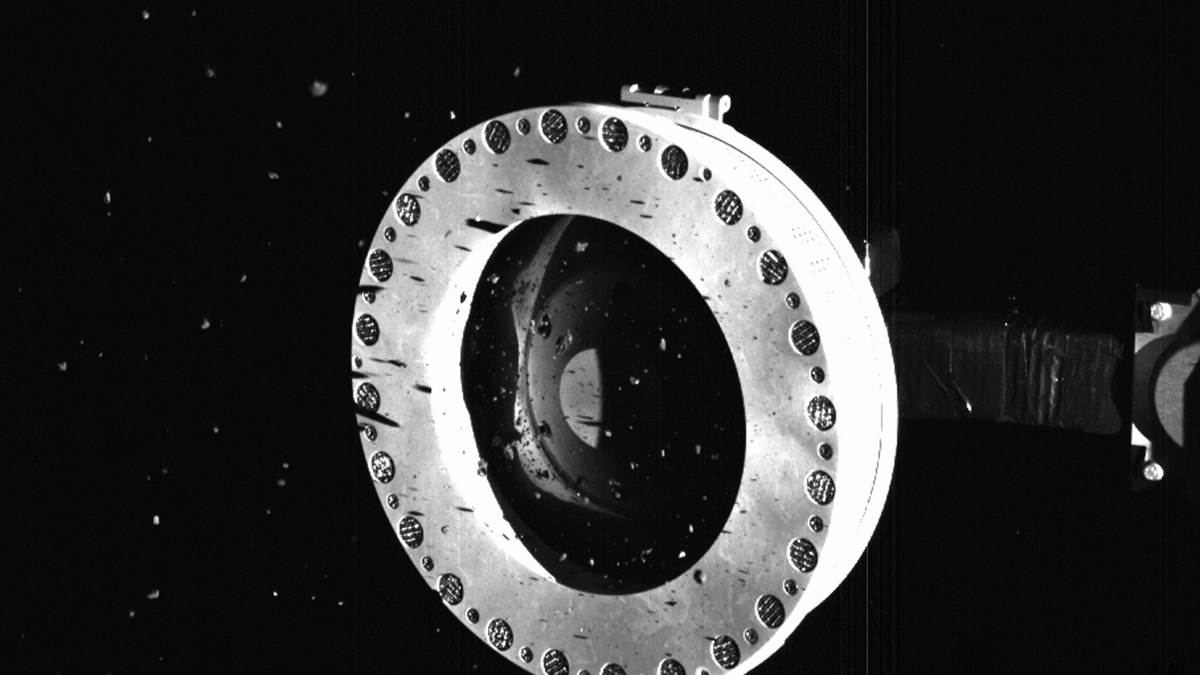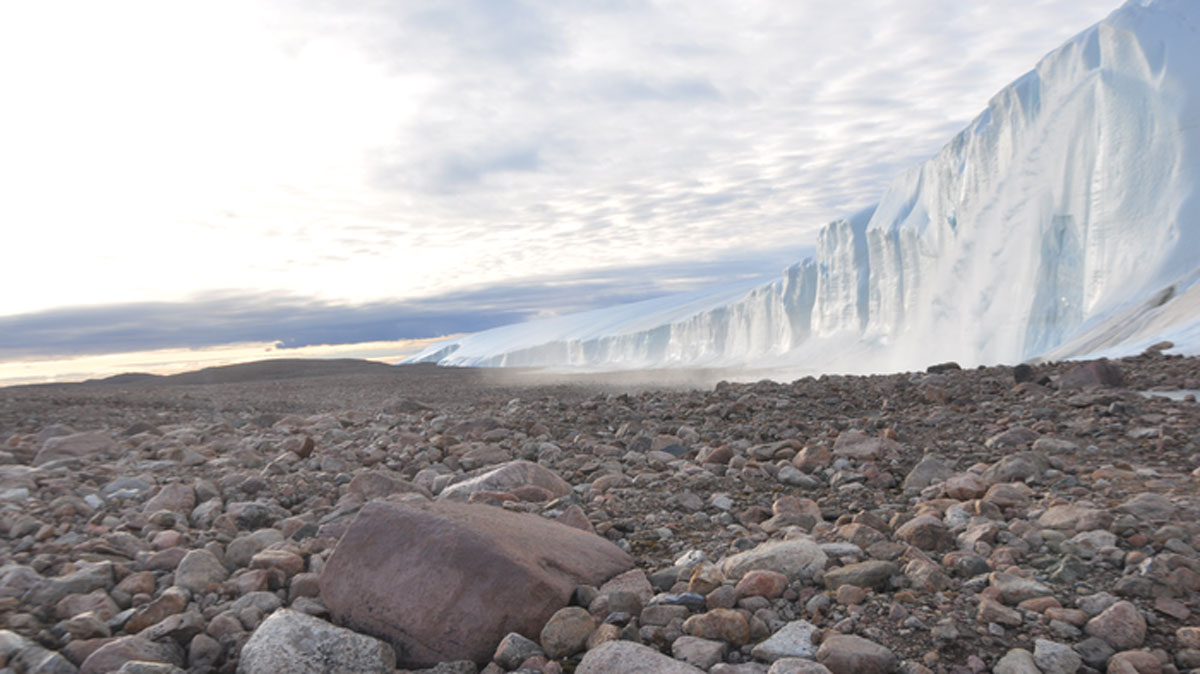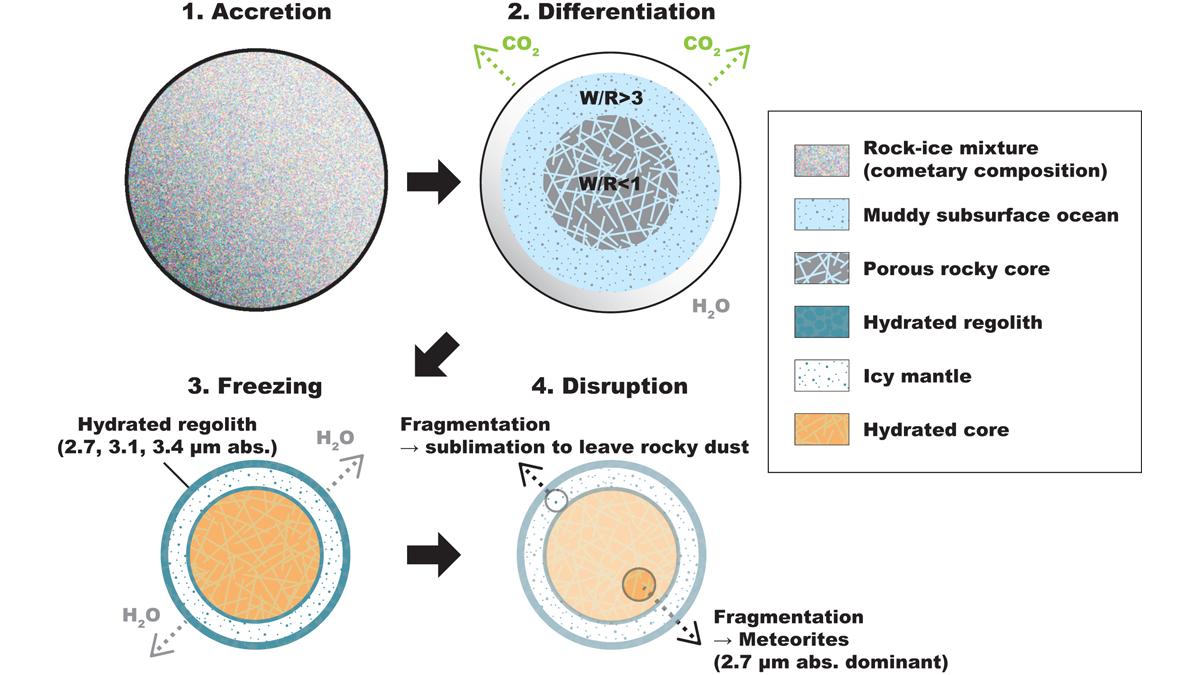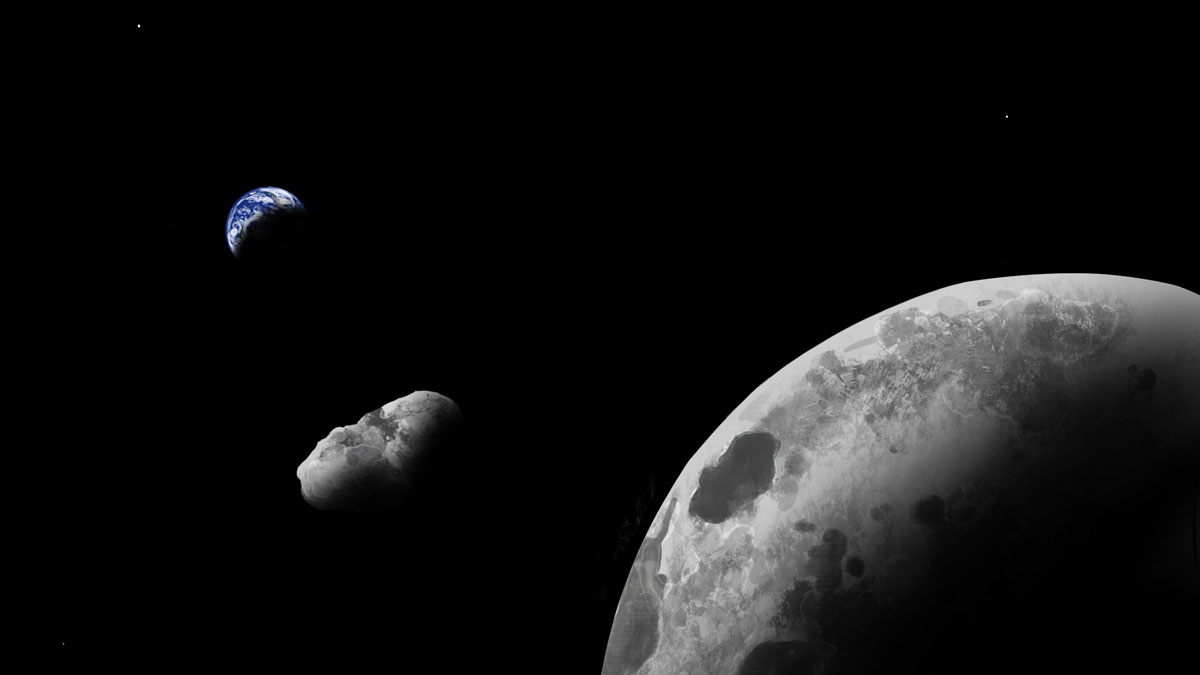The underwater crater, spotted serendipitously in commercial observations of seafloor sediments, is believed to have formed at roughly the same time as the famous Cretaceous-Paleogene impact event.
asteroids
A Time Capsule from the Early Solar System Is En Route to Earth
After an exciting encounter with asteroid Bennu, the OSIRIS-REx mission team looks forward to hitting pay dirt when a hefty sample of ancient planetesimal material is delivered to Earth next year.
Galaxy Mapper Tracks Asteroids Closer to Home
The Gaia mission’s asteroid survey will help dig deeper into the solar system’s rocky history.
Pushing the Limits of IR Spectra: Using Nano-FTIR on Meteorites
A new method, nano-FTIR, is used to examine microstructures and processes on grains, displaying its benefit for examining asteroid returned samples through a meteorite.
Impact Structure Hidden Under Arctic Ice Dates to the Paleocene
Greenland’s Hiawatha impact structure, more than 30 kilometers in diameter, is much older than previously thought, new results suggest.
A Giant Impact Triggered Earthquakes for Thousands of Years
When an asteroid struck South Africa during the Precambrian, earthquakes rocked the region for millennia as Earth’s crust reequilibrated, new research reveals.
A Deep-Space Origin for Volatile-Rich Asteroids
Spectral data and modeling suggest that volatile-rich main-belt asteroids initially formed at much greater distances from the Sun (>10 AU).
Data from Satellites Help Uncover Exploding Meteors
By using data from two lightning-spotting satellites, researchers measure explosions of thousands of small meteors and create a database that could help the planetary defense community.
Asteroid May Be a Chip off the Old Moon
Spectral data suggest that Kamo‘oalewa, a near-Earth asteroid, has a composition similar to lunar rocks.
A Remarkably Constant History of Meteorite Strikes
Researchers dissolve chunks of the ancient seafloor to trace Earth’s impact history and find that colossal clashes between asteroids don’t often trigger an uptick in meteorite strikes.










